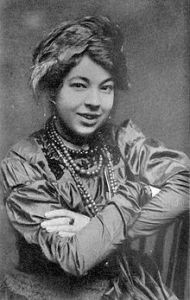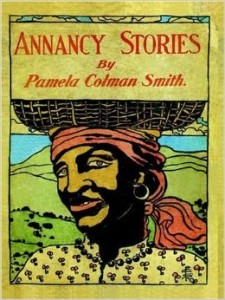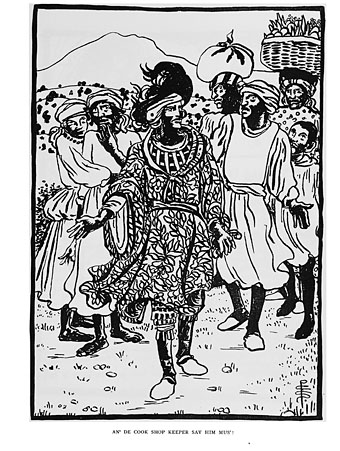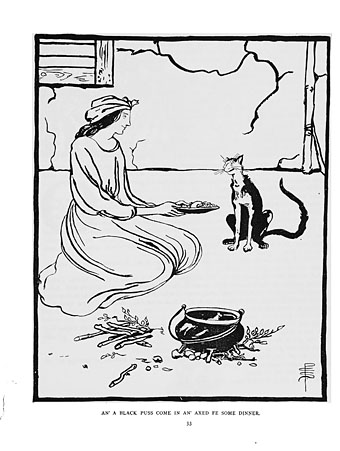Pamela Colman Smith (1899) ISBN: 0-9769612-2-9
Pixifire Reprint Edition
You may not have ever heard of Pamela Colman Smith but I would bet anything you care to wager that you know her work. Pamela Colman Smith is the artist responsible for the most famous and widely used of all Tarot decks, the Rider-Waite Deck. It’s the deck you think of when you think of Tarot and Pamela did a lot of innovative things with it. In particular she was the first person that we know of who added illustrative scenes to the numbered cards. Prior to her version the wands and cups and so on were just a set of wands and cups and so on, much like a modern deck of playing cards.
 It is a lesson in managing your copyright to learn that Pamela (pictured left, circa 1912) did not benefit very greatly from the artwork. The work was work-for-hire and it is true that she was paid, but that was it. If she’d had even a small cut of the Rider-Waite Tarot deck sales she’s have been a millionaire back when being a millionaire meant something.
It is a lesson in managing your copyright to learn that Pamela (pictured left, circa 1912) did not benefit very greatly from the artwork. The work was work-for-hire and it is true that she was paid, but that was it. If she’d had even a small cut of the Rider-Waite Tarot deck sales she’s have been a millionaire back when being a millionaire meant something.
But this isn’t a review of her artwork in general. It is a review of Annancy Stories, which Pamela Colman Smith both wrote and illustrated before the age of twenty-one, and on immigrating from Jamaica to America she convinced a New York publishing house to publish the manuscript.
That alone is remarkable and perhaps unsurprisingly so too is the book. It is lavished with intricate black and white illustrations in what would now be called a naive style, but which also have more than a little of the classical cuts and careful draftsmanship that would mark Pamela’s later life’s works. And the stories themselves are both charming and interesting. There are plenty of stories that probably trace back to West Africa and the culture hero cum trickster of the Ashanti, the spider Anansi himself. There are other mixed up tales too. A version of Cinderella set in Jamaica with a Jamaican Obeah woman instead of a fairy godmother and a Rumplestiltskin variant jump out as ‘fusion’ folklore. There are tales along the lines of Just So stories explaining this or that. The mixture of creative, local Jamaican, old West African and European folklore is not surprising. There were European workers in the canefields and slave-owners told stories too, so that the African and European folklore often did get mixed up in the telling.
One difficulty perhaps is that Pamela attempted to capture the dialect of the Jamaican speakers who were telling these stories around the fire… although if you are someone who enjoys folklore and fairy tales you’ve probably had to struggle with much worse. I found the stories quite easy to follow with only a few words requiring a moment of thought to decipher.
All in all this is a beautifully, lovingly reproduced version of an otherwise hard to find classic. It is well worth owning a print version if you can get it as the illustrations are half the reason the book is such a treasure.




